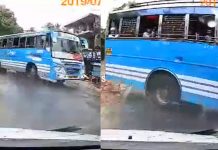When you’re driving on a public road, you have a duty to do so safely. Failing to drive safely could result in a sudden stop accident. Safe driving isn’t just a practice that keeps you safe, it protects other drivers and their passengers too.
When you need to stop your car, you’ll ideally do so with plenty of warning. Slowing down safely prevents accidents from happening and it lessens damage to your brake pads. There are some occasions where you’ll need to stop sharply, though. When this results in an incident, you may be involved in a sudden stop accident.
Unlike other personal injury cases involving vehicles, sudden stop accidents are difficult to prove. Comparative negligence is a common feature, especially if there are mitigating circumstances. By understanding more about sudden stop accidents, you can decide what to do if you’re involved in one.
Sudden stop accidents occur when you brake sharply to stop your car and there’s a crash as a result. You can become involved in such accidents when you’re driving behind someone and they stop suddenly and you crash into them. Or, you may be the person who needs to stop suddenly and you find that a careless driver rear-ends you. Depending at the speed you’re traveling, you may incur injuries ranging from minor whiplash through to those that are more severe.
In a lot of cases, sudden stop accidents only involve two vehicles. However, there are some circumstances where they involve more than two. You don’t need to be one of the vehicle drivers to suffer as a result. Passengers are vulnerable to soft tissue injuries too.
There will come a time in every driver’s life when they have to stop suddenly. For example, if a child runs out onto the road in front of your vehicle, you’ll need to brake sharply to avoid crashing into them. If you’re driving behind a vehicle that stops suddenly, there’s a risk you’ll crash into that person.
Hazards can appear on the road for any number of reasons. When someone is driving, it’s their duty to watch out for them. Sometimes, those hazards may take you by surprise. For example, if you’re driving down a busy highway behind a pickup truck and something falls off it, you may need to stop suddenly to avoid a serious accident. Similarly, if there’s an obstruction in the road during bad weather and it becomes visible at the last minute, you’ll need to stop suddenly to avoid crashing into it.
Sometimes hazards appear when the driver hasn’t been taking reasonable precautions to anticipate them. If you regularly drive near a school at the time that the academic day is finishing, you need to look out for children who suddenly run onto the road. Driving at speed in such areas is unwise because the higher your speed, the harder it is to stop quickly.
How close you drive to the vehicles in front of you should depend on your speed and the weather conditions. The faster your speed, the longer it takes for you to stop. Therefore, you need to maintain sufficient space between your vehicle and the car in front. If it’s raining, you need even more distance. Water on the road reduces friction between your tires and the road surface. If the road is icy, you should increase your stopping distance even more.
If someone stops suddenly and the driver behind them has been driving too close, it may be the rear driver’s fault. Driving too close is a common defense used by drivers who needed to stop suddenly.
Source – battafulkerson.



















